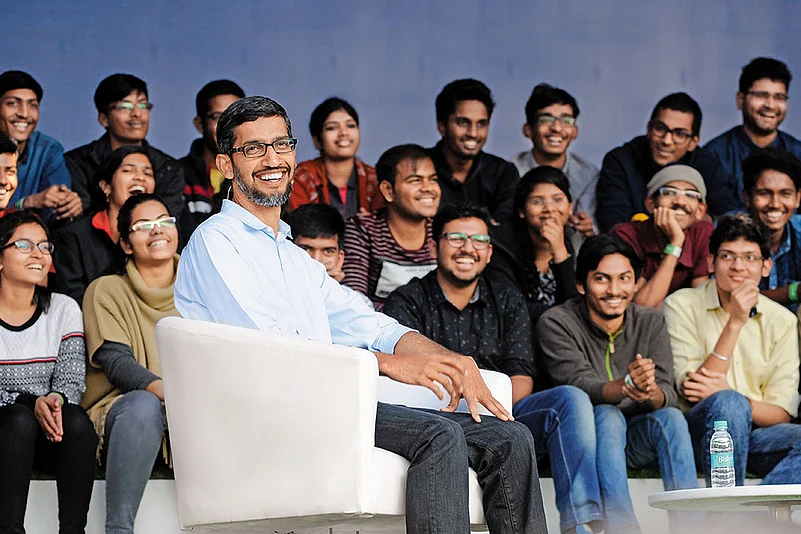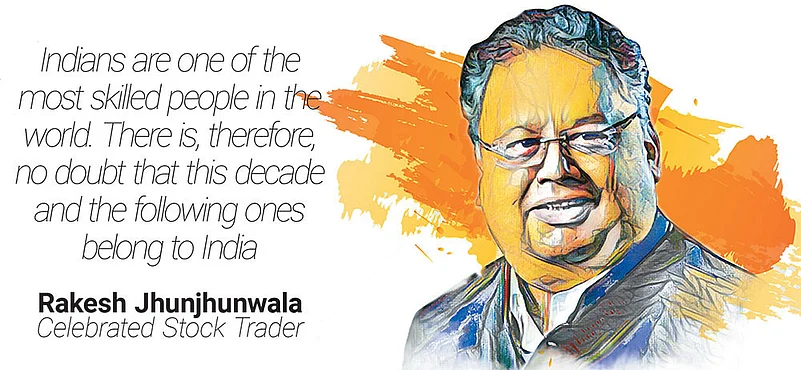
The Lure Of A Foreign Job
When BPOs came to India in the 1990s, the Indian worker was considered to have given a great cost advantage to IT/BPO companies. This opened the gates for westward movement of skilled workers, who built on low- and mid-skill workers already going to gulf countries. The jury is out if these migrations have done India good
***
What a time to be alive.
As a business leader, when I look back at the last two years, it almost feels like we travelled through a parallel universe and have now come back to a new reality. This is no science fiction, but it is not far from it either. If we look at it from a distance, we will realise that we experienced the anxieties, excitements and shocks of the dotcom boom of the 1990s, the financial crises of 2008 and the 1968 flu pandemic all during the two years of the Covid-19 pandemic. That is surreal!
However, as the global economy opens up, people movement will also pick up. Government data shows that more than 28 lakh Indians went abroad for employment between January 2020 and July 2022. In 2020, around 7.15 lakh Indians went abroad for work, while in 2021, about 8.33 lakh workers left the country for jobs overseas. This year, up to the end of July, 13.02 lakh Indians had left the country for work. This is important, as people are the only true mobile carriers of culture, ideas and learnings across borders. If we did not have mobility of people across the world, and if we did not have global Indians traversing borders, we would not have been able to imagine or create a blueprint for the much-anticipated “amrit kaal”.
For decades, India has been sought after by the world for its rich heritage, spices and people. The Indian education system, with all its perks and follies, has and continues to create a steady stream of academically qualified workforce which is skilled to be employed across sectors. This availability of a qualified workforce has encouraged the inflow of foreign investment. Companies want to come to India to prosper through its people and the skills they can be trained to achieve. But, with several developing economies working towards easing up their policies to encourage foreign investments, India cannot become complacent as it competes with other economies in BRIC—Brazil, Russia, India and China—nations that have similar benefits to offer.
As India moves towards the lowest median age of employable youth, much below that of China and the Organisation for Economic Co-operation and Development countries, it will soon have the youngest workforce compared to any other country in the world. This is the untapped potential that the country holds for the world. The testament to this lies in the fact that India is already home to around 1,500 global capability centres due to the availability of highly skilled technology workers and a low cost of operations. It is anticipated by the National Association of Software and Service Companies (NASSCOM) that this number will grow at a CAGR of 6–7% to touch 1,900 by 2025. But, as the demand increases, the supply of skilled workers will be a key priority for the government to ensure investments.
According to a report by NASSCOM-Zinnov, India will face a shortage of 14 lakh to 19 lakh tech professionals by 2026. India currently has 46 lakh tech workers, a number that is expected to rise up to 78 lakh by 2026. With a steady increase in public-private partnerships to address the need for skilling and employability, coupled with the booming edtech and online upskilling services, access to democratised learning and development will continue to create an aspirational cohort of skilled workers. This presents an opportunity for every industry, as it can benefit from workers who possess niche skills to more generic vocational skills that make them employable.
The government spends Rs 5,000 crore annually on skilling and has trained 30 million citizens over the past five years. It is also creating district-level skilling plans for each district.
There is a stronger thrust from the government and private sector alike to formalise employment in India. This is critical not just in terms of job creation but also for monitoring the quality of employment. The newly proposed labour codes have been formed to promote social security, keep exploitation in check and improve income for the blue/grey collar working class while creating a compliant environment for corporates to do business. This will help raise the quality of life for the middle India, which forms the largest cohort of the migratory workforce.
The availability of highly skilled knowledge workers is helping India demand value pricing. With the economy opening up and several companies preparing for digital nativity, the opportunity for technically skilled workers has skyrocketed. In the early 2000s, the STEM acumen of Indian talent, coupled with English-speaking capabilities, appealed to the larger IT/ITeS outsourcing industry, which relied on Indian workers mostly for the cost-arbitrage advantage. However, with the global talent movement and avenues to continuously learn within an organisation’s ecosystem, workers from India today are privy to the true value they offer to an organisation’s growth. This awareness, coupled with aspirations to live a bigger, better life, is encouraging many to upskill to remain relevant in a highly dynamic labour market. This apart, the pandemic has taught us the advantage of remote working, making it possible for global companies, with no physical presence in India, to hire workers within the country. This has been the biggest boon for global job creation, especially for emerging roles that are yet to find mainstream acceptance.

Gone are the days when India could be equated to cheap labour. Today, we can demand the price for the value our talent brings to the table. Most often, the investment that goes into training employees is paid off with the cost advantage we get from offering skilled workers who fit the role. Also, with the high mobility of skilled workers in search of roles they aspire for, the cost of hiring has shot up tremendously, forcing organisations to change their pricing.
In the early days of global talent transfer, there were unsettling debates on the negative effect of brain drain. Even as many skilled workers move borders to fulfil demand in other countries, India should focus on how it can enable an ecosystem that encourages the creation of global roles with better pay and living conditions.
Better benchmarking in ease of living, improved amenities, equitable access to civic services and more affordable healthcare costs will have a role to play in retaining skilled workers who can do more for themselves in India.
The booming e-economy and digital platform-based job discovery spaces are making jobs accessible with and without mobility at great cost-benefit to employers and employees. The potential for job creation is tremendous as India continues to improve its e-governance and connectivity. Improving pay parity coupled with increasing adoption of global technology such as blockchain, crypto, and avenues for wealth creation by way of making investment possible in global stock markets, will help skilled workers work for the Indian economy as they also create personal wealth.
In terms of making talent fit to be absorbed globally, more thrust needs to be put on language programmes, like German, Spanish, French or Japanese, which could be introduced in school. Eventually, India should continue to work on easing its regulatory framework and moving higher up on the ease of doing business index.
Intent alone will not suffice. It needs to be followed up with action. For example, labour is a concurrent subject and needs the Centre and the states to work in harmony for the country to benefit at large. The much-anticipated, debated and awaited labour codes, which were proposed by the Centre in 2020, are yet to be implemented by the states.
With every opportunity that an increasingly borderless economy provides, private and public sectors need to work more closely in making the most of what the world offers and benefit our talent.
Guruprasad Srinivasan, CEO, India Region, Quess Corp Ltd





















